Normal Consonants Worksheets for Ages 3-8
26 filtered results
-
From - To
Discover our engaging and effective Normal Consonants Worksheets designed specifically for children aged 3-8. These fun, educational resources from Kids Academy are perfect for helping young learners identify, understand, and practice consonant sounds. Each worksheet features vibrant illustrations and interactive activities to keep kids excited about learning. Whether at home or in the classroom, our expertly crafted worksheets support early literacy skills essential for reading and writing. Encourage your child to achieve their full potential with these captivating worksheets that make mastering consonants a joyous journey. Welcome to a world where learning consonants is both fun and fruitful!
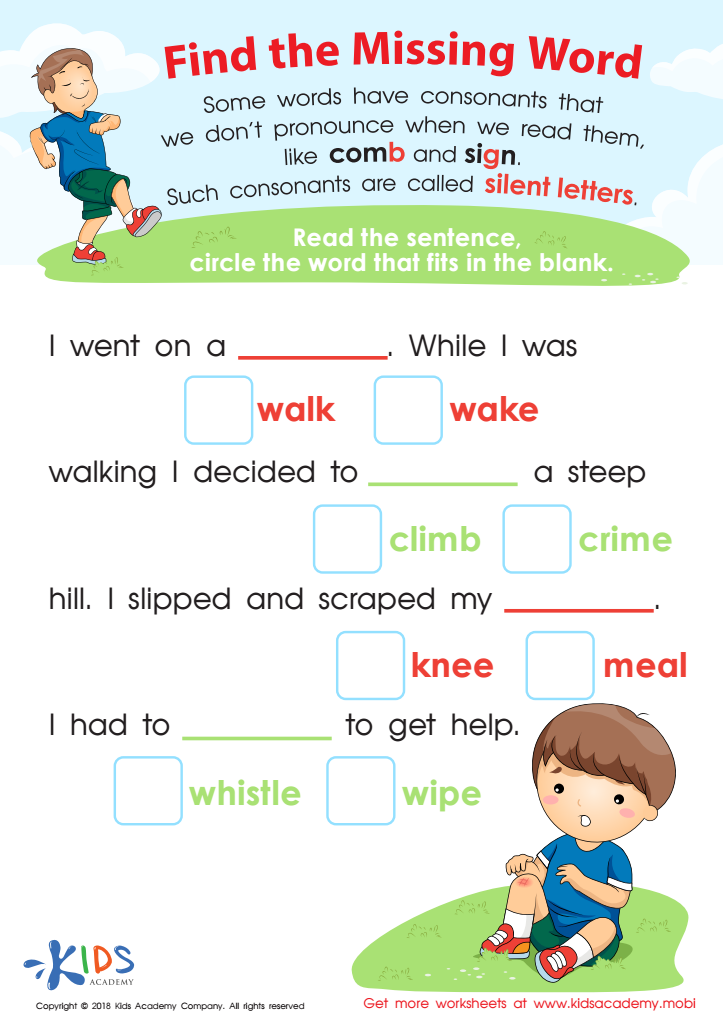

Find The Missing Word Worksheet
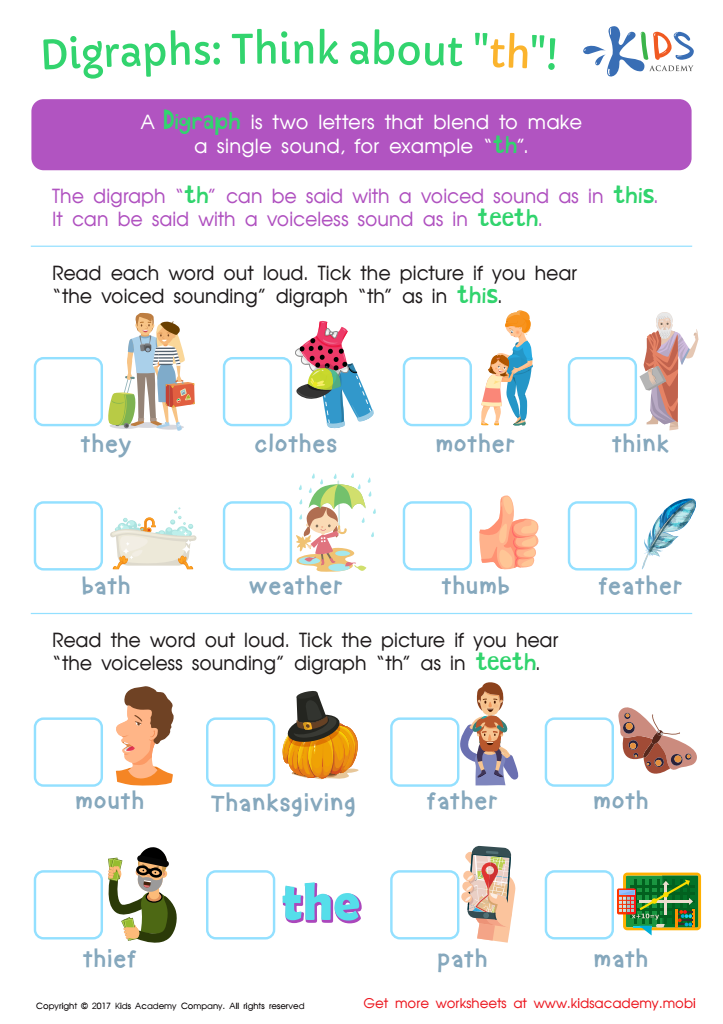

Digraphs: Think About "th" Worksheet


Blending Consonants: "Fl", "Bl" and "Gl" Printable
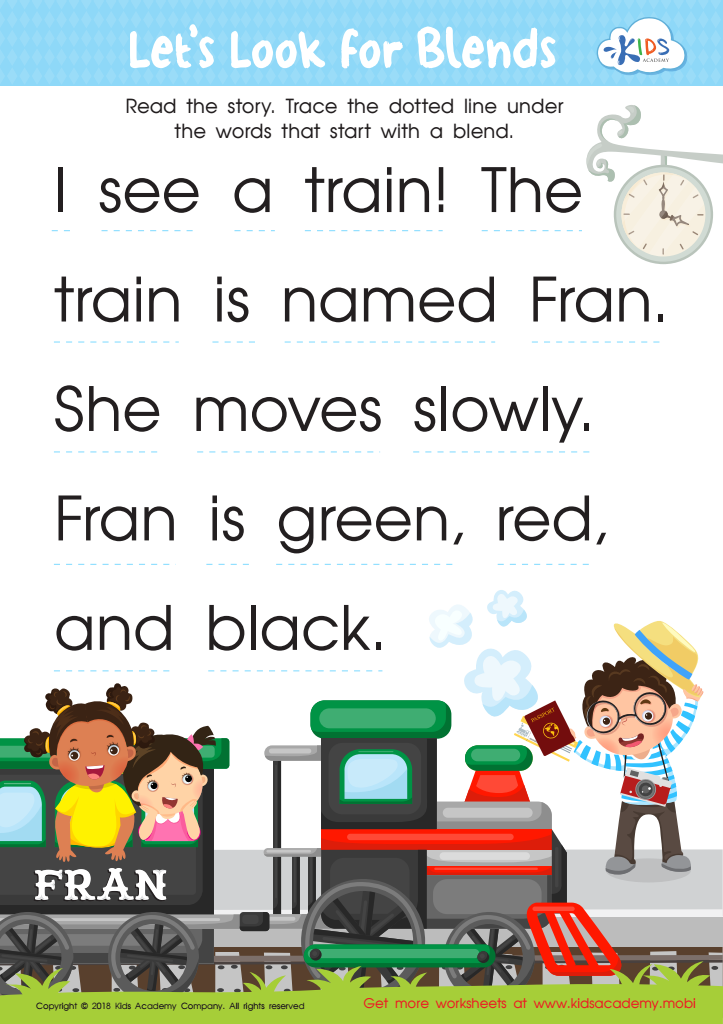

Let's Look for Blends Worksheet
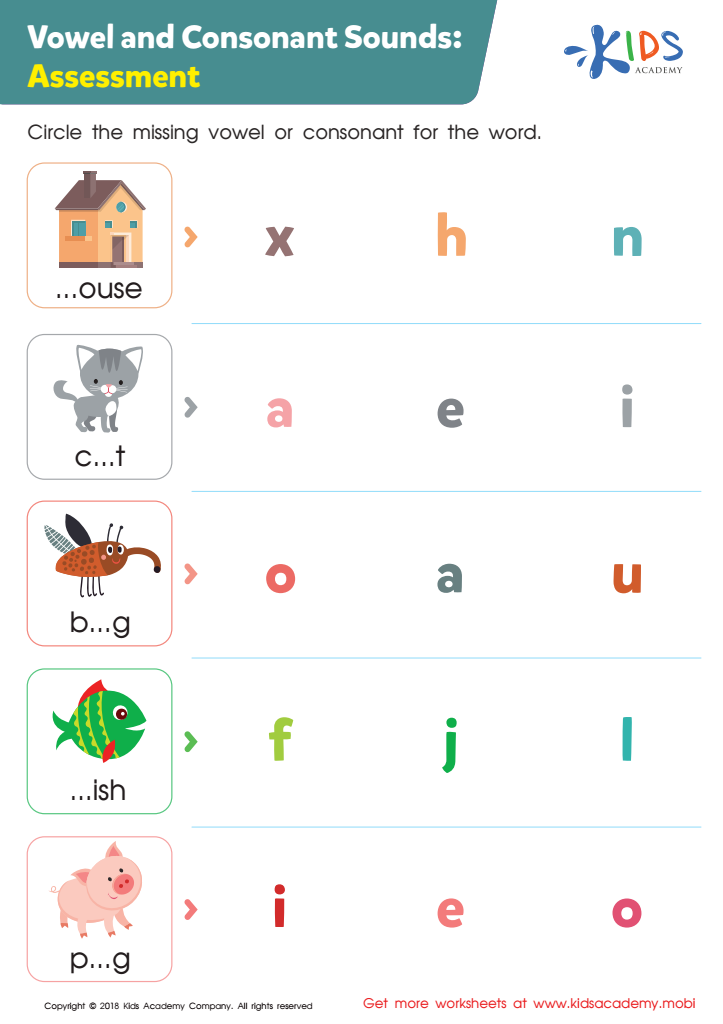

Vowel and Consonant Sounds: Assessment Worksheet
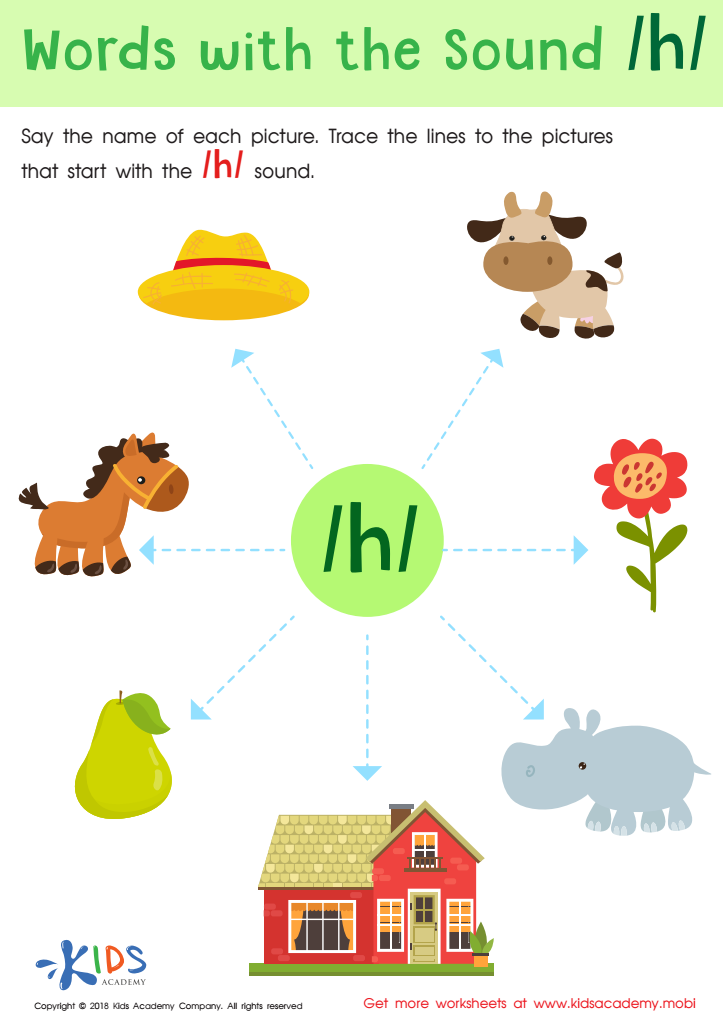

Words with sound h Reading Worksheet


Shhh... What Digraph? Worksheet
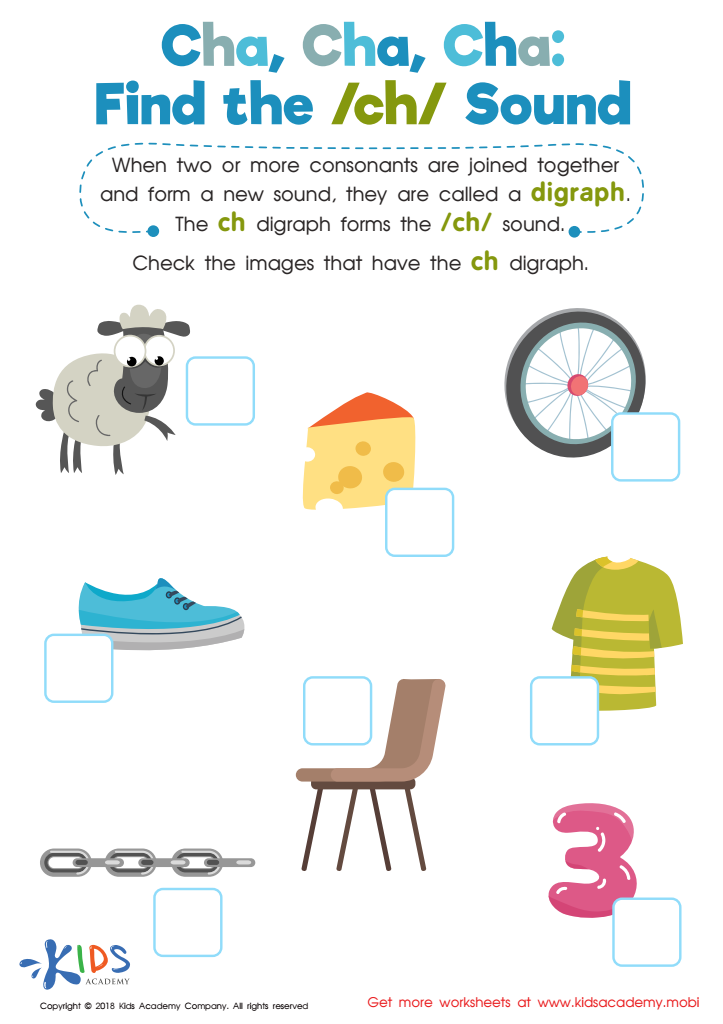

Cha, Cha, Cha: Find the /Ch/ Sound Worksheet
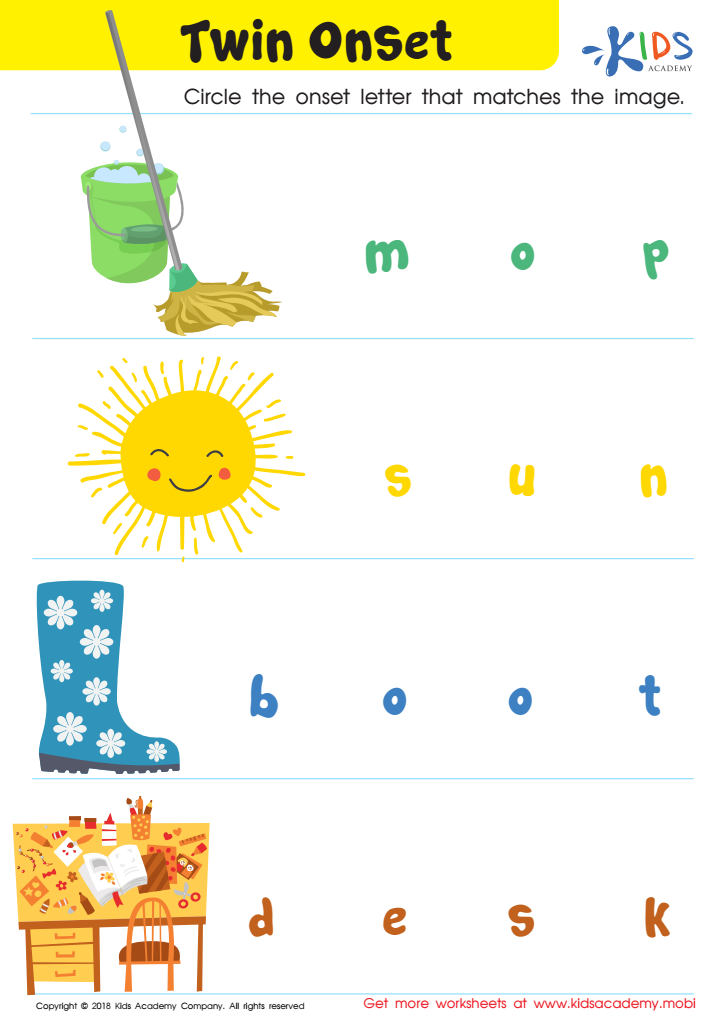

Twin Onset Worksheet
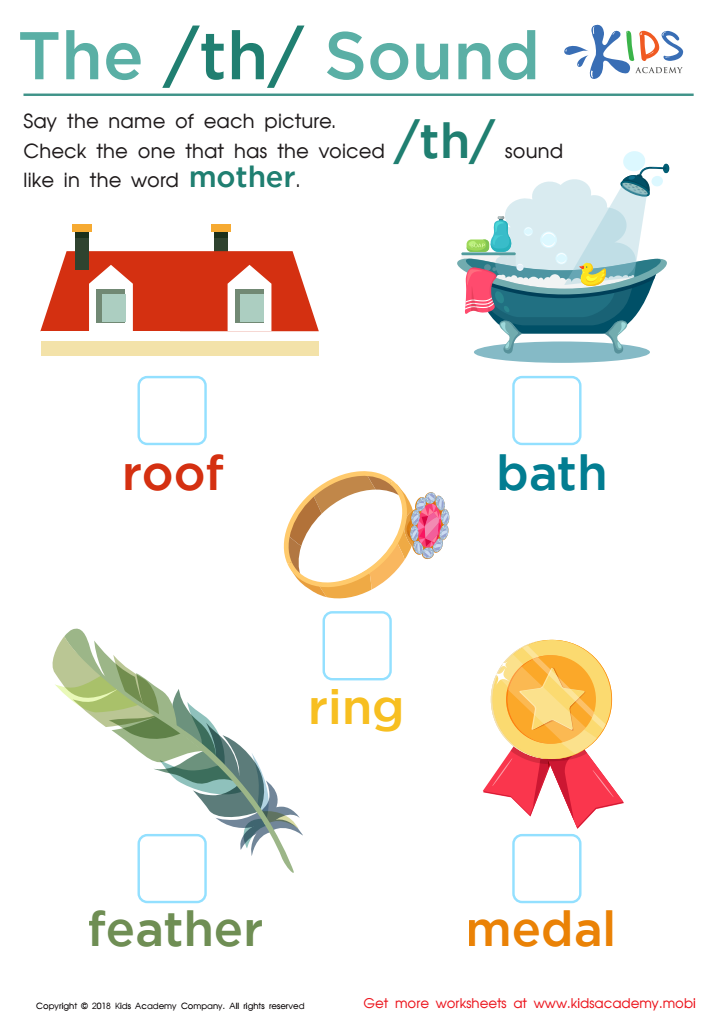

The /th/ Sound Worksheet
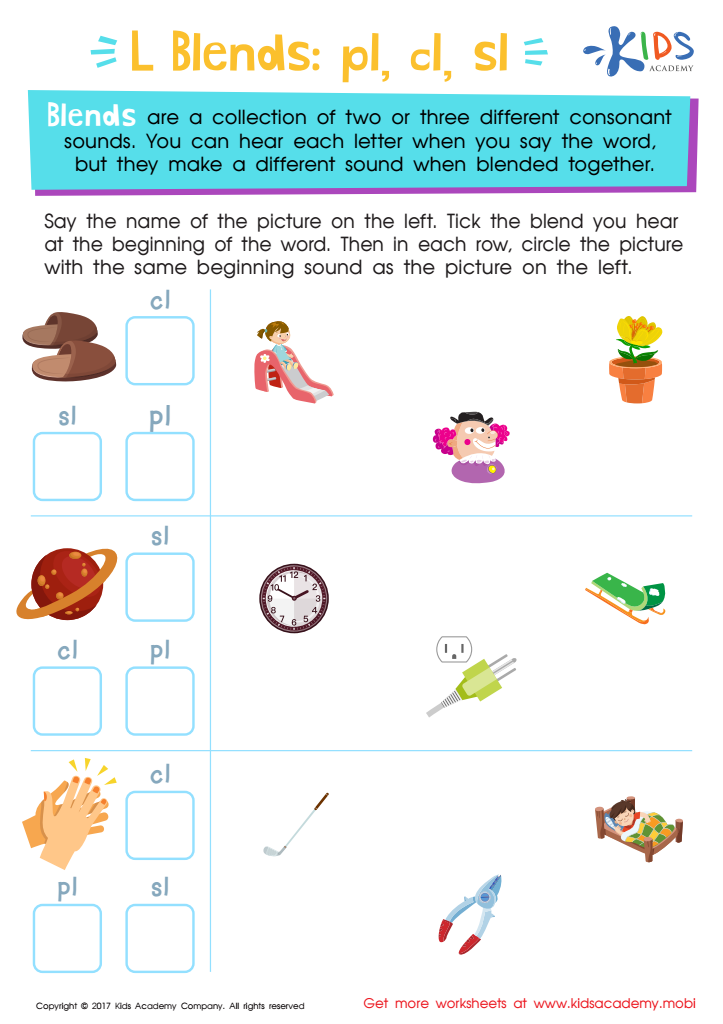

L Blends: "Pl", "Cl" and "Sl" Printable


Where Is the Digraph? Worksheet
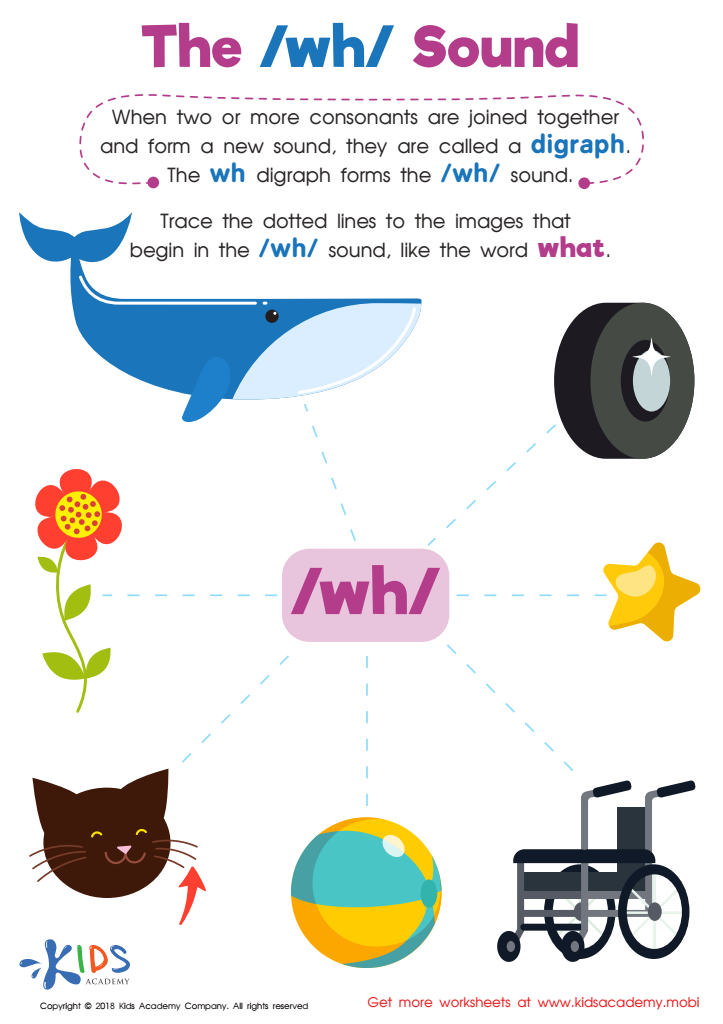

The /wh/ Sound Worksheet
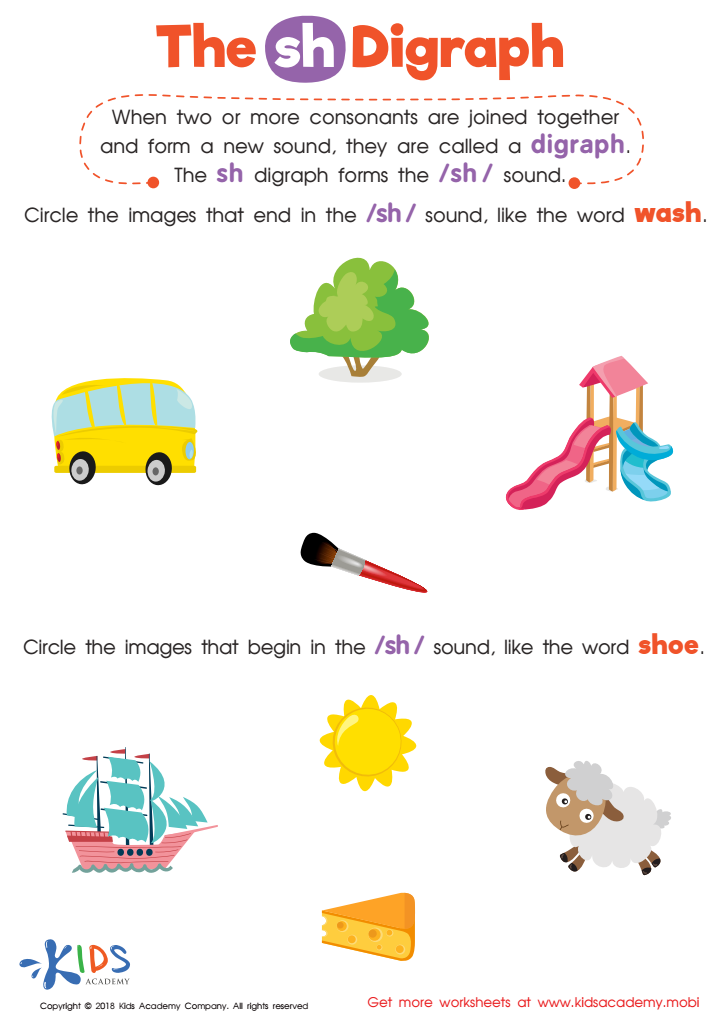

The SH Digraph Worksheet
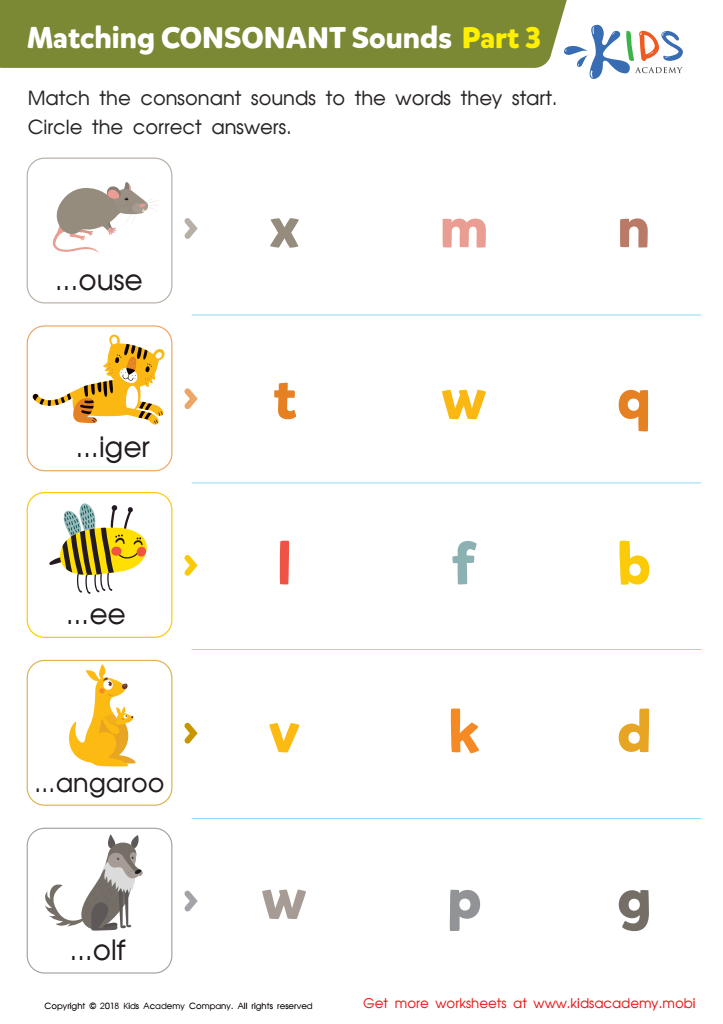

Matching Consonant Sounds: Part 3 Worksheet


Missing Digraph: Part 2 Worksheet
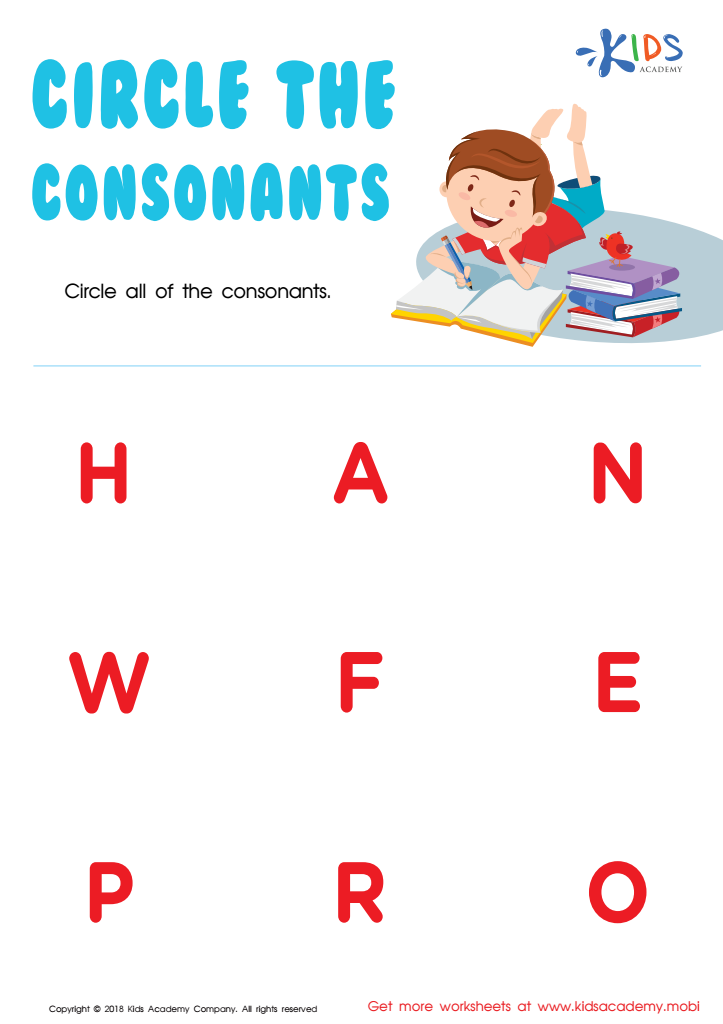

Circle the Consonants Worksheet
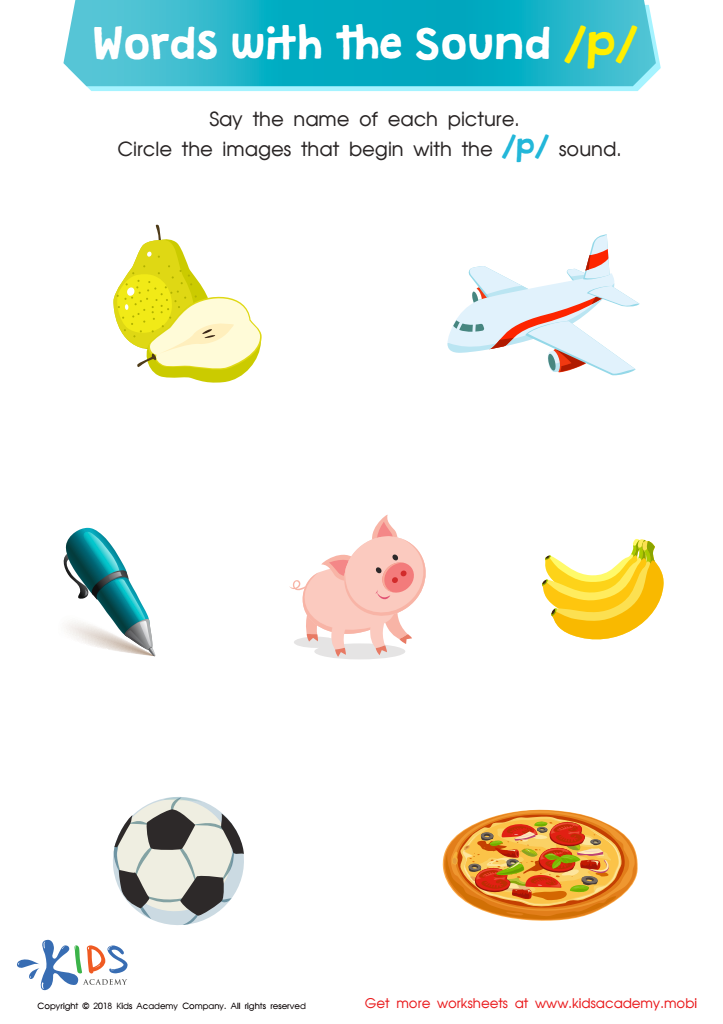

Words with sound p Reading Worksheet
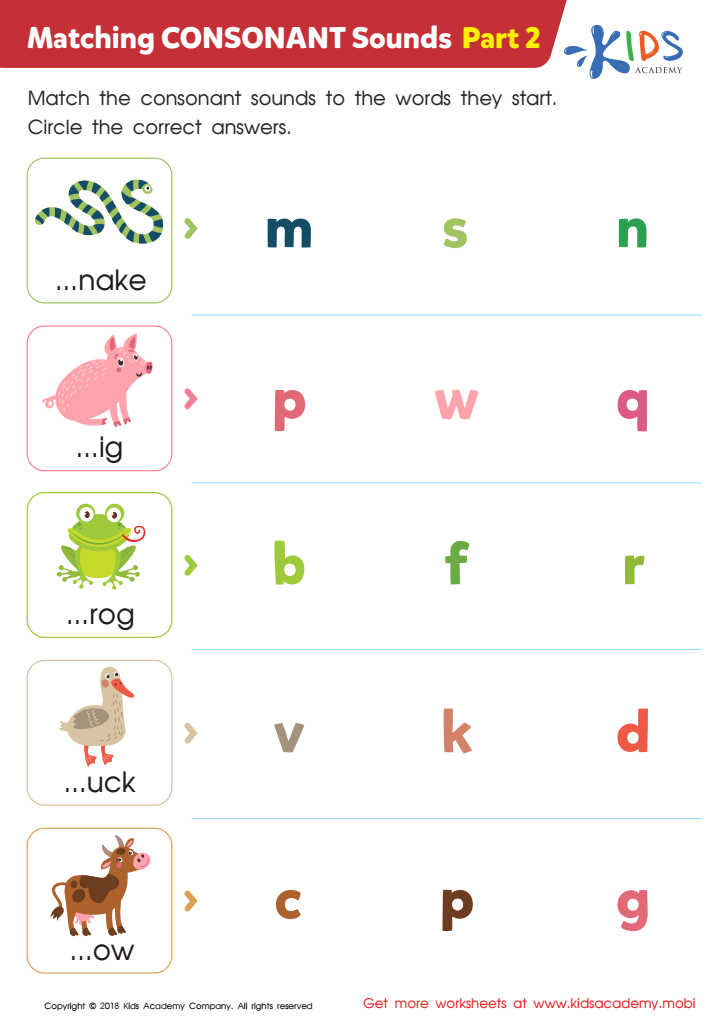

Matching Consonant Sounds: Part 2 Worksheet
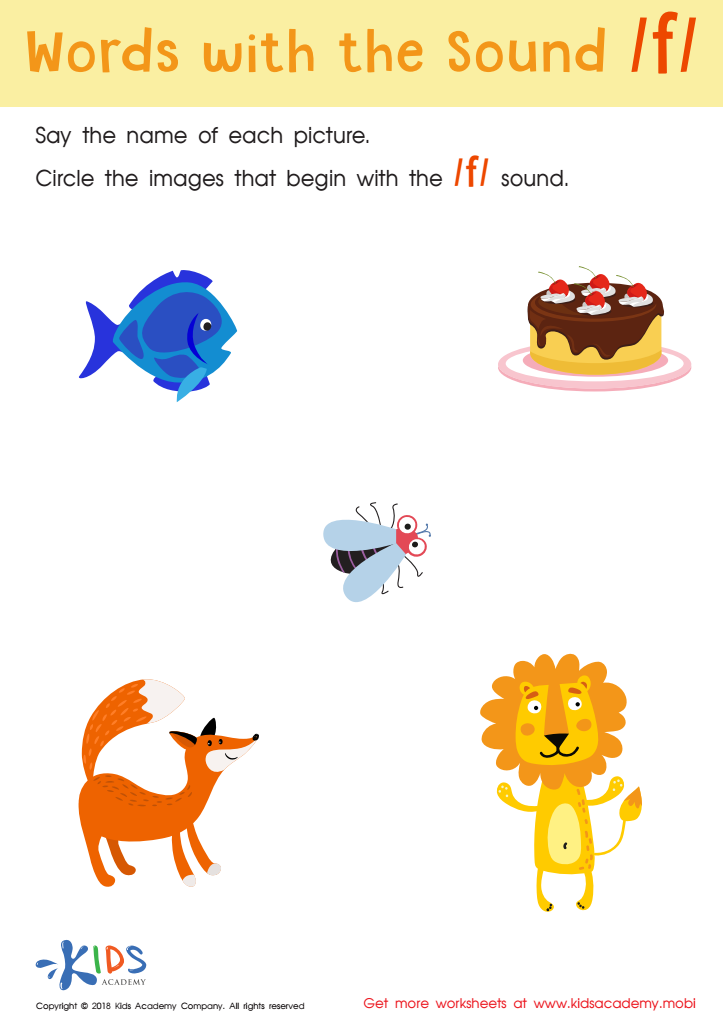

Words with sound f Reading Worksheet
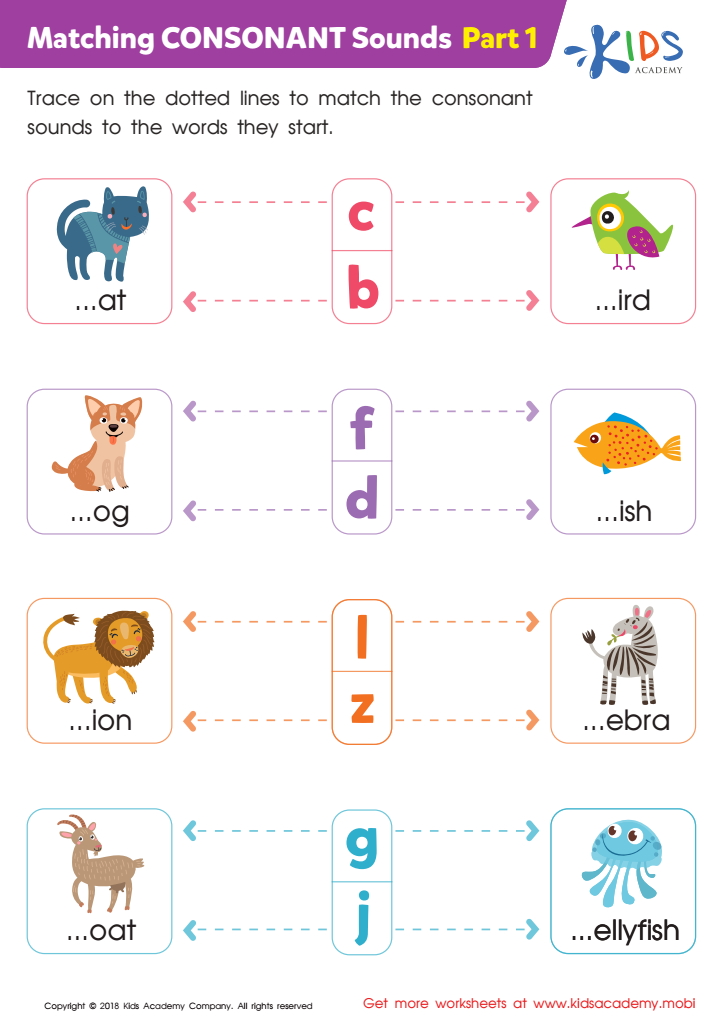

Matching Consonant Sounds: Part 1 Worksheet


Consonant Blends: "Dr" and "Tr" Printable


Double Consonant Spelling Worksheet
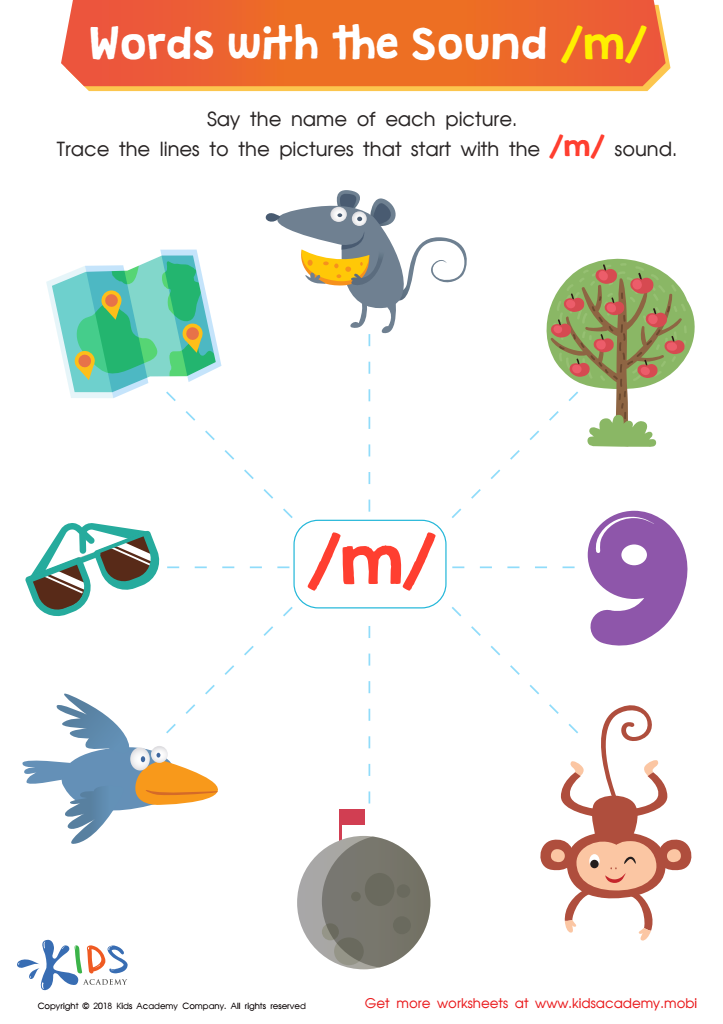

Words with Sound M Reading Worksheet
Understanding normal consonant development for ages 3-8 is crucial for parents and teachers because it establishes a foundation for effective communication and literacy skills. During this formative period, children undergo critical stages of speech and language acquisition. Proficiency in producing speech sounds correctly influences their ability to form words, which is fundamental for clear communication.
Children naturally progress through specific milestones in their speech and language development. By the age of 3, they typically begin producing most consonant sounds, although some may still emerge in subsequent years. Recognizing these milestones allows adults to identify and support normal development or address potential speech and language disorders early on. Early intervention is key because difficulties in consonant production can impact overall language skills, reading ability, and academic performance.
Teachers and parents who are informed about normal consonant development can provide appropriate support, whether through engaging language-rich environments, through structured phonics and speech activities, or through consultations with speech-language pathologists when necessary. Attentive support in these early years fosters better articulation, crucial for both expressive and receptive language skills.
In conclusion, caring about normal consonant development for ages 3-8 ensures that children can communicate clearly, bolstering their confidence, academic success, and social interactions. By monitoring and supporting speech development, parents and teachers set the stage for all-around language proficiency.

 Assign to My Students
Assign to My Students













